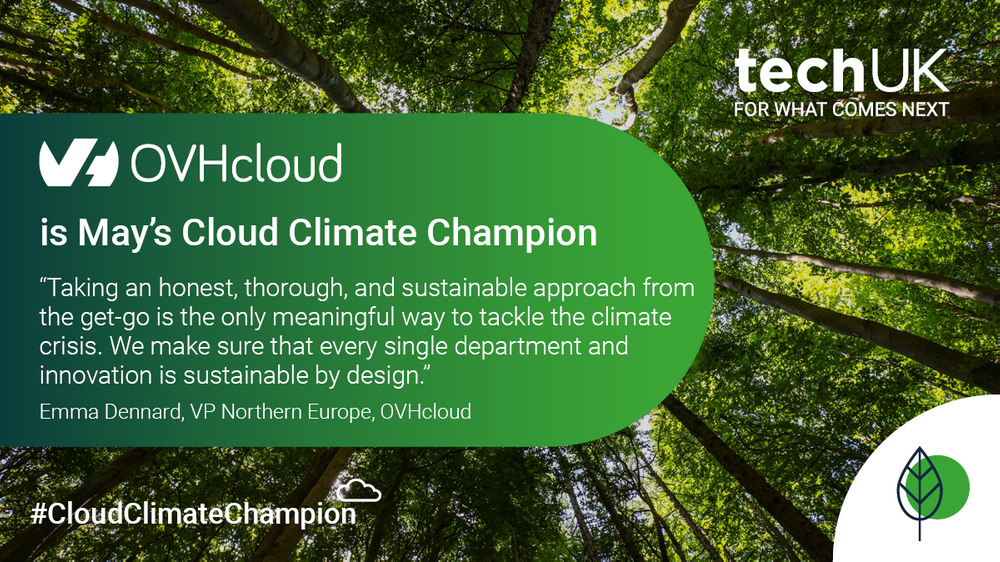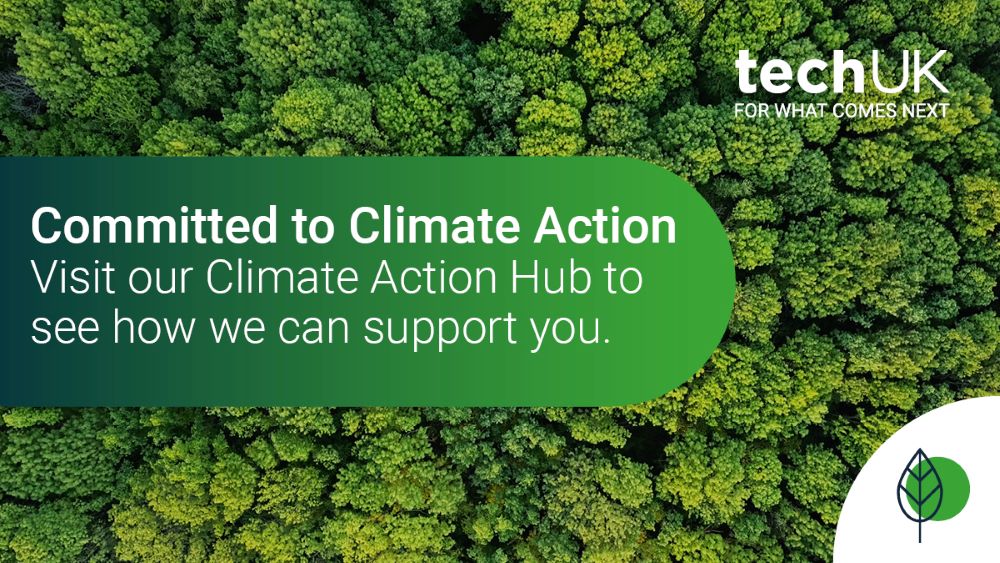Sustainable by design – putting climate at the heart of the cloud (Guest blog from OVHcloud)

Author: Emma Dennard, VP Northern Europe, OVHcloud
Being sustainable by design should be the default approach for all companies today. We are Europe’s largest cloud provider, and since our inception in 1999, sustainability has been at the heart of everything we do.
According to ARCEP, the digital world accounts for three to four percent of global greenhouse gas emissions, and within that, cloud accounts for approximately fifteen percent. The surprising fact is that most of this impact comes from components and server manufacturing, rather than electricity usage. For example, within OVHcloud, IT components represent 46% of the total carbon footprint, with electricity representing 38%.
Although we all have to start somewhere, taking an honest, thorough and sustainable approach from the get-go is the only meaningful way to tackle the climate crisis.
We make sure that every single department and innovation is sustainable by design.
OVHcloud is not just a technology company, but also an industrial company; we assemble all of our servers in our factories around the world. This allows us more flexibility than other organisations – for example, we developed our own water-cooling technology in 2003 that cools the server CPUs and GPUs. This is used in our datacentres around the world, and captures approximately 70% of the heat from servers, transferring it to a closed-loop system that circulates the liquid outside for cooling. This gives us approximately 50% energy savings compared to mechanical air cooling, reducing our global power and carbon footprint considerably.
This process is ongoing: in 2022, we developed our new hybrid immersion cooling system. Rather than using a typical immersion cooling system which uses pumps, heat sinks and condensers, our solution uses a direct-to-chip cooling system and a passive immersion cooling system, submerging servers using two fluids: water and a non-volatile, dialectric hydrocarbon fluid.
Our new cooling system means that there are no pumps or fans, eliminating any electricity use for cooling at the rack. It reduces power consumption by at least 20%, compared to air-cooled systems, and 7% versus water-cooled servers, and has reduced OVHcloud’s global datacentre power consumption by 20.7%, compared to the previous water-cooling technology. In areas where the ambient air temperature is less than 43 degrees, the WuE can be reduced to zero. Risk of dust circulation is removed entirely, reducing component failure rate by up to 60%.
Our carbon footprint measurement includes all aspects of our operations and manufacturing, not just electricity used by the DC.
As an organization, we are committed to openness and transparency about our power consumption and water usage; our average PuE is 1.28, WuE is 0.26 l/kWh and CuE is 0.2 tCO2e / MWh, and 77% of the energy we use is renewable. Our PuE and WuE measurements are in line with global ISO standards, and unlike a number of other companies, our carbon footprint measurement includes all aspects of our operations and manufacturing, not just the electricity used by the DC.
OVHcloud dismantles all of servers at end-of-life and examines whether they could be re-used or re-cycled. As a result, 25% of all components in servers are reconditioned, extending their service life and avoiding carbon emissions associated with acquiring or building new machines.
The same philosophy is followed in sourcing our datacentres; 24 of our 34 DCs were renovated from older buildings, rather than built from scratch, avoiding carbon emissions associated with the construction process.
We set aggressive goals, and are committed to future sustainability practices, including:
- Landfill: We aim to achieve zero waste to landfill by 2025
- Greenhouse Emissions: We are committed to reducing greenhouse emissions to zero, specifically direct and indirect emissions (Scope 1&2) by 2025, and all three scopes (Scope 3 is indirect downstream and upstream emissions, for example from travel and freight) by 2030
- Low Carbon Energy Usage: OVHcloud is committed to using 100% low carbon energy by 2025
OVHcloud is also an active member of the sustainability community, and is currently a member of The Climate Neutral Data Centre Pact and The VMware Zero Carbon Committed Initiative
OVHcloud holds itself and its employees to a high standard of conduct, and also operates a code of conduct agreement with its suppliers. All OVHcloud suppliers in turn agree to a code of conduct which specifies (amongst other things) the need for recycling, re-using, elimination of waste, avoidance of using harmful materials and chemicals, and reducing emissions wherever possible.
Our company was established to provide a European alternative to the hyperscalers, showing that freeing technology innovators is a sustainable business model. Since its birth, OVHcloud has brought the best technology, at the best price, to organisations across the world – and all while remaining sustainable by design.
Find out more: OVHcloud – Sustainability
techUK - Committed to Climate Action
Visit our Climate Action Hub to learn more or to register for regular updates.
By 2030, digital technology can cut global emissions by 15%. Cloud computing, 5G, AI and IoT have the potential to support dramatic reductions in carbon emissions in sectors such as transport, agriculture, and manufacturing. techUK is working to foster the right policy framework and leadership so we can all play our part. For more information on how techUK can support you, please visit our Climate Action Hub and click ‘contact us’.


